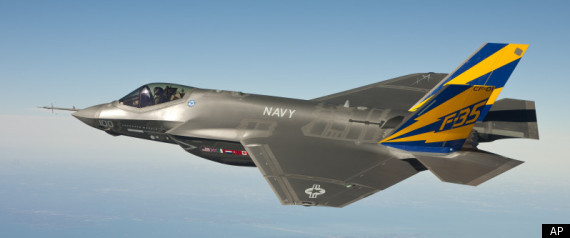 It seems that the F-35, the fighter jets that Canada is planning on buying to replace our aging F-18s, are running into more trouble.
It seems that the F-35, the fighter jets that Canada is planning on buying to replace our aging F-18s, are running into more trouble. The Fort Worth Star-Telegram reports that the plane's power systems are failing in ground tests forcing the entire fleet to be grounded. The story also points out that the planes have had two other serious delays in the last year.
In 2010, the government announced that it would be buying about 65 planes at a cost of about $9-billion. The cost could rise to $18-billion once a maintenance contract was included. But earlier this year, the parliamentary budget officer estimated that the cost of the planes would likely be much higher, closer to $30-billion. Canada's purchase of the F-35 became a major issue in the last federal election, with then-Liberal leader Michael Ignatieff vowing to scrap the deal and hold a competition.
Critics have condemned the Canadian government for rushing into a contract for the jets without knowing the final cost.
"Like your [the Canadian] government's proposed purchase of F-35s before all testing is complete and all costs are known, the United States has been rushing to "buy" before we "fly" for decades. It has been a disaster." wrote Winslow T. Wheeler in Embassy magazine.
In the U.S. the plane's skyrocketing costs, estimates say it'll cost the U.S. government around $1-trillion or comparable to the annual GDP of Australia, have made the plane controversial. The plane was also touted as a one-size-fits-all replacement for the Army, Navy and Marines. In the end, it may have just doomed the plane to cost-overruns and reduced its performance.
"The F-35's critics have long argued that its performance is compromised by having to fulfil too many roles and that an over-complicated design lashed to an over-optimistic schedule was asking for trouble. In the past 18 months, as delays have mounted and costs escalated, even some of the plane's ardent fans have become alarmed," the Economist wrote.
In May, the Atlantic wrote about how engineers scrambled to develop a second alternate engine for the plane, a move that could actually cost more money in the long run.
"What's remarkable about this is that the Pentagon doesn't event want a second engine, having already contracted one from Pratt & Whitney. In 2006, the Pentagon decided to stop funding the development of the second engine for the aircraft, citing a spiraling price tag. For the next five years Congress overrode the DOD's wishes and spent billions of dollars on this extra engine anyway," Joshua Foust and August Cole wrote on the magazine's website.
There's also some question as to whether the planes are even necessary. Whether it's worth the expense to build an expensive stealth-fighter when the days of the Cold War are long gone and threats like terrorism, piracy and failed states are more common.
"The world has changed. The odds of great power war have declined dramatically. We still need a deterrent capacity against China and Russia, but how much is enough? In a decade's time, the United States plans to have 15 times as many modern fighters as China, and 20 times as many as Russia," writes the Atlantic's Dominic Tierney.
Origin
Source: Huffington
No comments:
Post a Comment